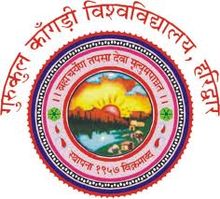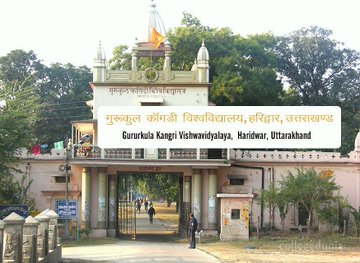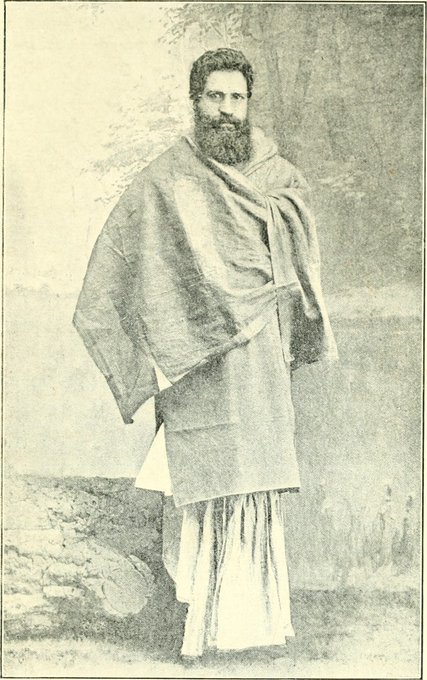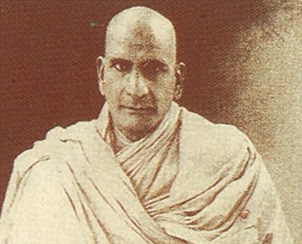
#TodayinHistory Swami Shraddhananda is shot dead by a fanatic Abdul Rashid in 1926 in 1926. One of the great leaders of modern India, who awoke the Indian consciousness and called out the dangers of pan Islamism.
Thread on him.
Thread on him.

Swami Shraddhanand, also known as Mahatma Munshi Ram. It is ironical though, that his early life showed no signs of greatness to come. He was an atheist, got addicted to gambling, drinking, lust.
In a sense Shraddhanand’s early life had some parallels with that of Swami Dayananda. Born in a well to do family in Jalandhar district of Punjab, in 1856, his real name was Munshi Ram Vij
His father Nanakchand was a top ranking police officer, and that meant the family was constantly on the move. His atheist beliefs were borne out of his own bitter experiences. He saw devotees being stopped at a temple, to allow a lady of a noble family to complete her puja.
Disillusioned he was attracted to Christianity, but then he saw the priest of the Church, in a compromising position, with a nun, and gave it up. He tried to go towards Islam, but in Varanasi he witnessed a case, where an influential Muslim lawyer accused rape get away.
These experiences drove him to become an atheist, he lost interest in studies, became addicted to alcohol and gambling. Fortunately it was an encounter with Swami Dayananda Saraswati, that put his life back on the right track, and veered him away from the path of ruin.
His father then was posted in Bareilly, and was in charge of the security arrangements for Dayananda’s visit as well as public debate with Rev. Scott. Munshiram, then went along with some of his friends to actually disrupt the arrangements, but was impressed by Swamiji.
He admired Swamiji’s fearlessness in disregarding the threats, to his life and taking on the missionaries head on. He had his own discussion with Swamiji about God, and told him that while he could not find fault in his arguments, he still could not get himself to believe in God
“Look, you asked questions, I gave answers that were a matter of logic. When did I promise that I would make you believe in god? Your faith in god will only come when the lord himself makes you a believer.”- Swami Dayananda to Munshi Ram
That prophecy by Swamiji came true in a way. He witnessed his wife Shivadevi, pawning her ornaments to pay for his drinking, and a friend of his attempting to rape a girl under the influence of alcohol.
However his friend attempting to rape a girl, was the last straw, and he realized the ill effects of liquor, and how it could make a man into a beast. The sworn atheist, was on the path to become a believer. Munshiram finished his law studies, and began to practice in Jalandhar.
It was at Jalandhar, that he joined Arya Samaj and came under the influence of Lala Devraj. It would result in a total transformation in his life. He gave up alcohol, meat eating, and began to take part in the activities of Arya Samaj regularly.
Munshiram’s popularity rose even more, when he won a public debate with Pandit Shyam Das of Amritsar on the Vedas. He started the weekly Sadharma Pracharak in Urdu for the propagation of Vedic philosophy, and also started morning time Nagar Kirtan.
After he successfully organized the Arya Samaj anniversary in Jalandhar it became even more noted, and he became even more well known. One of the major initiatives taken by him was in the field of women’s education.
In those days, mostly Christian missionary schools allowed women, and in a way they often brainwashed them against Hinduism. He underscored the need for women’s education in the 2nd issue of Saddharmpracharak in an article headlined Adhura Insaaf( Half Justice).
The series of articles in 1889, strongly argued about the need for Hindu schools to admit women. He was however opposed by more conservative Hindus, and even Christian missionaries too, who felt they could lose ground.
However he stood his ground and in 1891, the foundation was laid, and by 1892 around 40 girls had enrolled. They were given incentives to study, and by 1895, the school had a 100 girl students.
The Kanya Mahavidyala High School for girls was inaugurated in June 1896, and it reached out to students in Punjab, the North West, and even some from Pune. In a way Munshi Ram was heavily influenced by Satyartha Prakash and championed the cause of women’s education vigorously.
He began to conduct remarriage of child widows, often at the cost of being excommunicated by more conservative Hindus. Again Munshi Ram stood his ground, quoting from the Vedas and Manu Smriti to show that widow remarriage was not against the Hindu dharma.
In 1925, he passed a resolution through Arya Samaj stating that no girl should be married before 16 and no boy before 25. Though a part of Arya Samaj, Munshi Ram felt that D.A.V. schools were not really suitable for producing adults who would live as per Vedic ideals.
He wanted to make Vedic education the core curriculum at DAV, however a section opposed him. And soon there was a split in the Arya Samaj between those advocated a Vedic form of instruction, and those who were against it.
Munshi Ram was among those believing in the Gurukul system, far away from the urban centers, where he felt youth were vulnerable to all kind of vices. It could have been due to his own experiences too.
His ideal education was in a Gurukul located among forests, hills far away from urban areas, imparting study of Vedas as well as modern disciplines. It was this dream that took shape in 1901, at the village of Kankhal near Haridwar, on land donated by Munshi Amar Singh.
By 1917, the Gurukul became a huge complex of buildings, with 276 students, a university with 64 students, and staff fo 35. It had laboratories, classrooms, a dormitory, hospital, workshops. Soon other branches of the Gurukul opened at Multan, Kurukshetra,Rohtak.
This gurukul is now famous as Gurukul Kangri University at Haridwar, one of the leading educational institutes in India. 



When Lala Lajpat Rai was arrested and deported, the Britishers began to crackdown on Arya Samaj, as they felt it had become a center of sedition. Munshi Ram, began to argue that the Arya Samaj was a purely religious body, not connected with politics in a series of articles.
He however spoke out against the harassment most Arya Samajists had to undergo at the hands of British, and even defended Lalaji in a newspaper article in 1907. He even invited British officials to his Gurukul to disprove charges of sedition.
One of the eminent personalities was C.F.Andrews, who praised it as “the real India”, and later became his close friend. Others were Ramsay McDonald, Viceroy Lord Chelmsford and i n 1915, Mahatma Gandhi visited it, and was totally impressed.
When the Patiala Maharaja imprisoned 75 Arya Samajists for sedition in 1909, Munshi Ram appeared in court to defend them. He forced the Maharaja to apologize and withdraw the case.
With the passing away of his wife, Munshiram decided to take Sanyas. And on April 12th, 1917 in the presence of 20,000 witnesses, he undertook the initiation, shedding his old garments, assuming a new life.
He took the name of Shraddananda, saying faith or Shraddha was what guided his life. He cut off ties with family, Arya Samaj, and declared that only God was his Guru. Munshiram was now Swami Shraddananda, the free spirit, liberated from all worldly bonds.
It is faith (shraddha) that was the inspiration of the life I have led so far. Faith has always been the revered goddess of my life. Today also it is faith that has driven me to enter the state of sanyas.
While apolitical for the most part, Swami Shraddanand, plunged into the freedom movement in 1919 in response to Mahatma Gandhi’s call. He actively protested against the draconian Rowlatt Bill, and soon began to address mass meetings all over.
When riots broke out in Delhi, Swami Shraddanand arrived there to restore peace. A group of Manipuri soldiers trying to control the crowd, aimed their rifles at it. Swami Shraddanand, defiantly bared his chest and invited them to fire.
Fortunately the situation was defused with the arrival of an European officer. It was then Swami Shraddanand realized his leadership potential, and his ability to guide crowds.
On April 4, 1919, Swami Shraddhanand created history preaching from the pulpit of the Jama Masjid in Delhi. In his characteristic saffron robes and the need for unity against the common enemy, the British government.
Swamiji’s act of baring his chest to soldiers, and his preaching from the pulpit of Jama Masjid had an electrifying effect. He was by now seen as a hero, a savior who had come.
I make this one appeal to all of you, brothers and sisters. Purify your hearts with the water of the love of the motherland in this national temple, and promise that these millions will not remain for you untouchables, but become brothers and sisters- Swami Shraddanand
Their sons and daughters will study in our schools, their men and women will participate in our societies, in our fight for independence they will stand shoulder-to-shoulder with us, and all of us will join hands to realize the fulfillment of our national goal- Swami Shraddanand
Though Swami Shraddanand, came into the freedom movement at the insistence of Mahatma Gandhi, he later fell out with him on many issues. Swamiji was not satisfied with the tactics adopted by Gandhiji, he felt non violence was not really an effective way.
The major difference between them was on two, that of Dalits and the other of Hindu-Muslim relations. He was completely against untouchability and wanted to make it a core issue of the Congress manifesto.
He felt that mere political freedom would have no meanings if people were discriminated on the basis of caste. He wanted the Dalits to be accepted as equal partners, allowed entry into temples, be given education in schools.
Swamiji exposed the nefarious activities of the Christian missionaries, and believed that the only way to counter them, was to give the Dalits more education, a more dignified life.
However the Congress party ignored his resolutions, and instead it appeared to be more interested in the Khilafat movement then. In spite of his repeated attempts at various sessions to include removal of untouchability as a core point, it was never given importance by Gandhiji
Add to it, the Ali brothers played their own dirty politics to sideline him. Undeterred Swamiji kept fighting for the rights of the untouchables, and actively took up their cause for temple entry and education in a new magazine the Liberator.
The other major difference Swamji had with Gandhiji was over the Khilafat issue. He felt that the Khilafat movement was just a means to spread radical Islamism in India through the backdoor and repeatedly warned Gandhiji of encouraging it, saying it was too divisive.
The Congress also started it’s policy of appeasing radical Muslim leaders in order to counter the Muslim League’s growing influence. When some Hindus demanded ban on cow slaughter, Gandhi refused to do so, saying the Muslims should not be forced to do so.
At the same time in 1921, the Moplah rebellion in Kerala’s Malabar region, resulted in horrific atrocities against the Hindus there. Gandhiji refused to condemn them, fearing it would affect the Hindu-Muslim unity, and in fact praised the Moplahs for their jihad.
When Hindus protested against the Muslim silence over the Moplah atrocities, Gandhiji once again dismissed their concerns. Dissatisfied with what he felt as Congress silence over the radical Muslim activities, Swamiji was now attracted to the Hindu Mahasabha.
And on April 2, 1923, he spoke in the presence of Madan Mohan Malaviya and other members, of the need to integrated the Dalits into the Hindu fold, through education and a better life.
He felt that only Hindu unity could save them from other religions, trying to wipe out the Sanathan Dharma. And one such significant event was the Suddhi of the Malkana Rajputs who had been converted to Islam forcibly.
The Malkana Rajputs scattered around Mathura, Farrukhabad were Muslims in name, but their customs were Hindu. On 13th February, 1923, Swamiji established the Bharatitya Hindu Shuddhi Sabha, to reconvert them back to the Hindu fold.
Sadly Swamiji did not get any support either from Congress leaders and many like Motilal Nehru, Jawharlal Nehru, Gandhiji distanced themselves from his shuddhi movement. Gandhiji in fact called Swamiji hasty and immature.
Notwithstanding Gandhiji’s disapproval of Shuddi, the fact was that it saved many Hindus from conversion to Christianity or Islam. In 1926, Swamiji performed the Shuddhi of a Muslim lady, Asghari Begum from Karachin in Delhi.
She was reconverted and given the name of Shanti Devi, it however led to a huge uproar in the Muslim community. Her former husband, filed a case of abduction and forcible conversion against Swamiji, his son Indra, and son in law Dr.Sukhdeo.
However Swamiji was acquitted of all charges by the court. On Dec 23rd, 1926, Swamiji was taking rest in his Delhi home, when one Abdul Rashid, asked to see him and discuss with him some aspects of Islam.
Swamiji explained he was weak, had an attack of bronchial pneumonia, and said he would discuss later. Rashid asked for some water, and when Swamiji’s personal attendant Dharma was away, fired two shots point blank into his chest.
Though Rashid was overpowered by Dharma and Indra, Swamiji was dead on the spot. The great man had become a martyr for the cause of the nation, for the cause of Sanathan Dharma. He paid a price for his steadfast faith in his beliefs, from which he never wavered.
From the degenerate atheist Munshiram to the saint Swami Shraddhanand who spoke out fearlessly against the dangers of radical Islamism, stressed the importance of education, a truly remarkable and great life.
And thanks for following this long thread patiently.
#Naman

And thanks for following this long thread patiently.
#Naman


My article on Swami Shraddhananda here, do check out and share.
historyunderyourfeet.wordpress.com/2016/02/02/swa…
historyunderyourfeet.wordpress.com/2016/02/02/swa…
My podcast on Swami Shraddhananda here, do check out and share.
spotifyanchor-web.app.link/e/toRcVXq0Yvb
gaana.com/song/swami-shr…
spotifyanchor-web.app.link/e/toRcVXq0Yvb
gaana.com/song/swami-shr…
• • •
Missing some Tweet in this thread? You can try to
force a refresh















